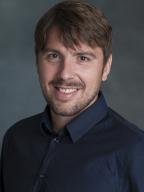
Biography
Education
- Ph.D., 2015, University of Colorado Denver, Design and Planning
- Ph.D., 2012, University of Bologna, Architecture and Urban Design
- M.Arch., 2007, University of Bologna, Architectural Engineering
Courses Taught
- URBS 206 – Introduction to Graphic Communication Tools Used by Urban Studies and Planning Professionals
- URBS 340B – Qualitative Urban Research Methods
- URBS 400 – Planning for the Natural and Built Environment
- URBS 670 – Visual Communication Skills for Urban Planners
Selected Publications and Presentations
PEER-REVIEWED ARTICLES AND BOOK CHAPTERS:
Rigolon, A. (2016). A complex landscape of inequity in access to urban parks: A literature review. Landscape and Urban Planning, 153, 160–169. doi:10.1016/j.landurbplan.2016.05.017
Rigolon, A., Derr, V., & Chawla, L. (2015). Green grounds for play and learning: Synergies in design between schools and park systems. In D. Sinnett, S. Burgess, and N. Smith, Handbook of green Infrastructure: Planning, design and implementation. Cheltenham, UK: Edward Elgar Publishing.
Derr, V., & Rigolon, A. (2015). Participatory schoolyard design for health and well-being: Policies that support play in urban green spaces. In Freeman, C. and P. Tranter (eds.) Volume 12, in Skelton, T. (editor-in-chief) Geographies of Children and Young People. Singapore: Springer Singapore.
Rigolon, A. & Flohr, T. (2014). Access to parks for youth as an environmental justice issue: Access inequalities and possible solutions. Buildings, 4(2), 69-94. doi:10.3390/buildings4020069
Rigolon, A. (2013). Greenways as educational opportunities: Lessons from Boulder, Colorado. Children Youth and Environments, 23(3), 148–163. doi:10.7721/chilyoutenvi.23.3.0148
Rigolon, A. (2012). A greener future: The active role of place in enhancing ecoliteracy in children. Journal of Architectural and Planning Research, 29(3), 181–203.
Rigolon, A. (2011). People-centered architecture. In-Bo, ricerche e progetti per il territorio, la città e l’architettura, 2, 63-72.
Rigolon, A. (2011). A space with meaning: Children’s involvement in participatory design processes. Design Principles and Practices, 5(2), 151-163.
Rigolon, A. & Alloway, M. (2011). Children and their development as the starting point: A new way to think about the design of elementary schools. Educational and Child Psychology, 28(1), 64-76.
Rigolon, A. (2010). European design types for 21st century schools: an overview. CELE Exchange 2010/3, 1-8.
Rigolon, A. (2009). European housing standards, in L. Gelsomino, O. Marinoni (Eds.), European housing concepts, 1990-2010 (pp. 47-51). Bologna, Italy: Editrice Compositori.
CONFERENCE PRESENTATIONS:
Rigolon, A. (2015). Planning for young people’s access to urban parks: An environmental justice investigation in Denver. 2015 ACSP Conference, Houston, TX.
Rigolon, A. & Flohr, T. (2014). Methodological trends in planning: Qualitative approaches in transformative mixed research studies. 2014 ACSP Conference, Philadelphia, PA.
Rigolon, A. (2014). Youth engagement in transportation master planning. 2014 EDRA Conference, New Orleans, LA.
Rigolon, A. & Flohr, T. (2013). Exploring children and youth’s accessibility to urban green spaces: A GIS study measuring access opportunities. 2013 ACSP/AESOP Conference in Dublin, Ireland.
Rigolon, A. (2011). Play and learn with space. Transformable and interactive space fostering child development. ReteVitruvio Conference, Bari, Italy.
Rigolon, A. (2011). A space with meaning: Children’s involvement in participatory design processes. Design Principles and Practices Conference, Rome, February.
Bio and Research Interest
Dr. Alessandro Rigolon joined the department of Urban Studies and Planning in Fall 2015 as an assistant professor. His research interests center on planning for parks and recreation, research methods, and urban design. His main focus is on access to green infrastructure from an environmental justice perspective, with a specific emphasis on access to parks for young people. In his doctoral dissertation, he studied how park planning and land use planning have shaped the geographic distribution of parks across income and ethnic groups in Denver, Colorado. Alessandro is also developing a framework to integrate qualitative and quantitative geospatial methods in planning through a mixed methods approach.
Before joining CSUN, he was a part-time lecturer at the University of Colorado Boulder and at the University of Bologna, teaching courses in urban design, land use planning, GIS, research methods, and landscape architecture. He also worked as an urban designer and architect in several Italian firms from 2007 to 2011. At CSUN, he is currently teaching courses on visual communication tools for planners and on urban sustainability. During his free time, he loves exploring the outdoors with his wife, Sofia, and their Boston Terrier puppy, Bruno.
